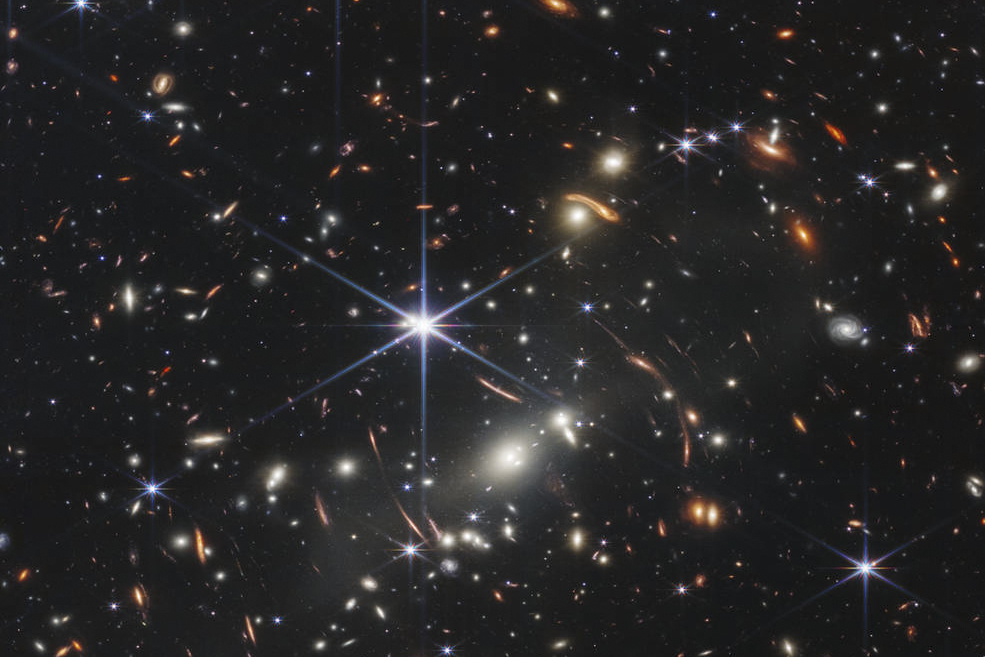
We are living in amazing times.
I know what you’re thinking. “Didn’t McIntyre have COVID?” (I did.) “Well, maybe COVID broke his brain? How could anyone think these are amazing times?!”
Fair enough. It’s up to each of us to decide how we define “amazing.”
Some days, arguably, most days, we are living in amazingly rotten times. You know the list; you don’t need me piling on.
Still, I am going to attempt the impossible this week and make the case despite the awfulness we are currently wallowing in, we are also living in amazingly good times; an era of human history where wonderful things happen every single day thanks to the imagination and genius of men and women who might not have a reality series or high Q-Rating but are creating a better world for everyone.
Last week, the world was dazzled by the first images from the $10-billion James Webb Space Telescope (JWST), a collage of colorful lights and clouds of gas representing one tiny slice of the universe and yet crammed with literally millions of planets and galaxies going back to the dawn of creation, an estimated 13 billion years ago. For those of us with non-scientific minds, which is most of us, it’s incomprehensible.
Built as a replacement to the Hubble Space Telescope, the world’s most successful scientific instrument ever, the JWST will allow thousands of astronomers around the globe to see 100-times farther into the cosmos, literally to the dawn of the universe itself.
What will they find? I have no idea. Half the time I can’t find my reading glasses.
Dr. E.C. Krupp, director of the Griffith Observatory shares the global excitement over the Webb project. “Details, details, details,” enthused Krupp. “We now have the ability to penetrate the atmosphere of planets in other solar systems. I suspect we will find lots of planets like this one,” meaning life-sustaining for humans.
Yes, $10 billion is a lot of money. Nearly a tank of gas. Still, in the grand scheme of the United States annual budget, the cost of the Webb Telescope is like the coins that roll out of our pockets and lodge between the couch cushions. The projected life of the telescope is 20 years.
The United States taxpayers made this possible.
Through our elected representatives, we invested $10 billion into science without any guarantee of success and without a Cold War to spur us deeper into space.
This project was conceived years before Putin dropped his sheep’s clothing and even before China started its massive investment in space exploration.
We funded the JWST because, 1) We could and 2) The thirst for knowledge is still alive and well in this country despite the onslaught of misinformation, alternative facts and just plain old bovine feces.
In fairness, the James Webb Space Telescope was created, built, launched and operated by an international consortium including the European Space Agency and the Canadian Space Agency, but the vast majority of the funding and brain-power is home grown, with much of the genius originating right here in Southern California.
The rest of the nation/world might think of SoCal as actors, surfers and Kardashians, but it’s important to remember it’s also the Jet Propulsion Laboratory, Caltech and the Griffith Observatory.
I can only imagine the laughter my job application would produce at any of those places.
Most of us have “ooohed” and “aaahed” at the first pictures from deep space without any idea what we’re actually looking at. And that’s okay. How many of us jetting to San Francisco really understand the forces of lift and drag and the travel of the center of pressure on a curved surface that make it possible for a plane to fly?
Most of us stare out the window at the twinkling lights below or the endlessly morphing and undulating cloud formations and appreciate the experience of flight aesthetically, especially after the beverage cart arrives.
The Webb Telescope photos many never mean more to us than a stoner’s trip to a Pink Floyd planetarium show, but we shouldn’t forget that when we move on to the next click-bait, women and men of science here and around the world are doing a deep-dive into the mysteries of life itself. This happens today and every hour of every day.
Naysayers, as always, will bellyache about the price tag, “All that money spent in outer space!” Blah, blah.
We must remind them, not one penny was spent in outer space, every penny was invested on Earth for the benefit of earthlings.
Related Articles
How many more times will Adam Schiff claim to have the goods on Trump?
How tech anti-trust laws may harm small businesses
Stop playing politics with DACA, pass a permanent fix through Congress
Chicago politics ought not be the model for Orange County
Is Gavin Newsom a realistic presidential candidate in 2024?
In the fields of medical science, robotics, and nearly every branch of human knowledge, genius and diligence advances the catalog of understanding enabling the next generation to build on our world.
Despite today’s real problems and the cast of villains making life more difficult, there are many million more working on solutions.
Benjamin Franklin, the greatest scientist of the 18th century, happened to be in France when the Montgolfier Brothers made their very first manned balloon flight in 1783.
As the gasbag lifted and was carried away by the wind, Franklin’s companion asked, “What good is it?” to which Ol’ Ben replied, “What good is a newborn baby?”
Doug McIntyre’s column appears Sundays. He can be reached at: [email protected].
